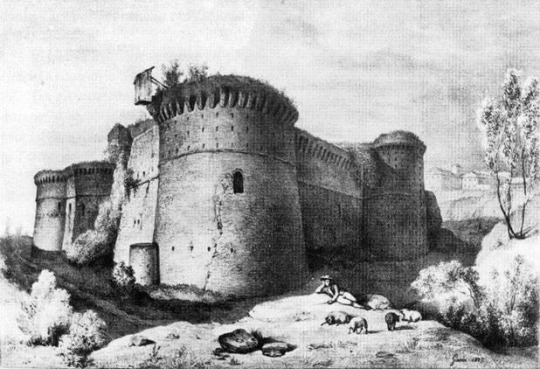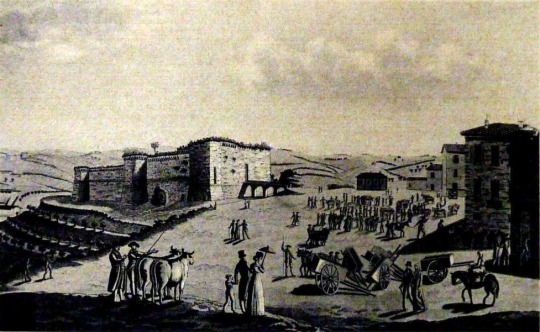#moncalvo
Text
Autunno nel Monferrato: funghi, tartufi e Barbera
Le colline tondeggianti del Monferrato sono decorate da lunghi filari di viti, mentre, dalle porte dei ristoranti esce il profumo di tartufo, di bolliti misti, di brasato o bagnacauda. L'autunno nel Monferrato è una delizia per tutti i sensi. #monferrato
Foliage e profumi
l’autunno è arrivato
Il paesaggio del Monferrato è dolce, come quello toscano, fatto di colline e vigneti a perdita d’occhio e l’autunno nel Monferrato celebra la festa di tutte le meraviglie di questa zona. È una zona benedetta dalla natura, dominata dall’uomo, che ne ricava funghi, tartufi, castagne e nocciole ma soprattutto uva. L’autunno nel Monferrato è per chi ha voglia…

View On WordPress
#Acqui Terme#autunno#Canelli#Casale Monferrato#Italia#Moncalvo#Monferrato#Nizza Monferrato#Rosignano Monferrato#Strevi#Vignale Monferrato#weekend
0 notes
Text
Fiera del Tartufo Bianco di Moncalvo 2022
Fiera del Tartufo Bianco di Moncalvo 2022
La 68^ edizione della Fiera del Tartufo bianco a Moncalvo, tra le colline del Monferrato, si terrà nei weekend di domenica 23 e 30 ottobre ed è nota per essere caratterizzata da una mostra mercato di prodotti tipici, quali tartufi, funghi, nocciole, salami e vino.
La tradizione, iniziata nel 2020 di ospitare attività commerciali di Patti, la città con cui Moncalvo è gemellata, continua anche…
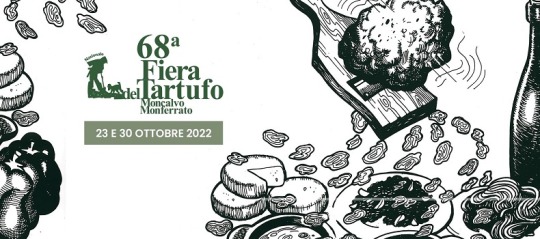
View On WordPress
0 notes
Text
Se è autunno, si va in giro sugli Appennini e in collina- 1
Se è autunno, si va in giro sugli Appennini e in collina- 1
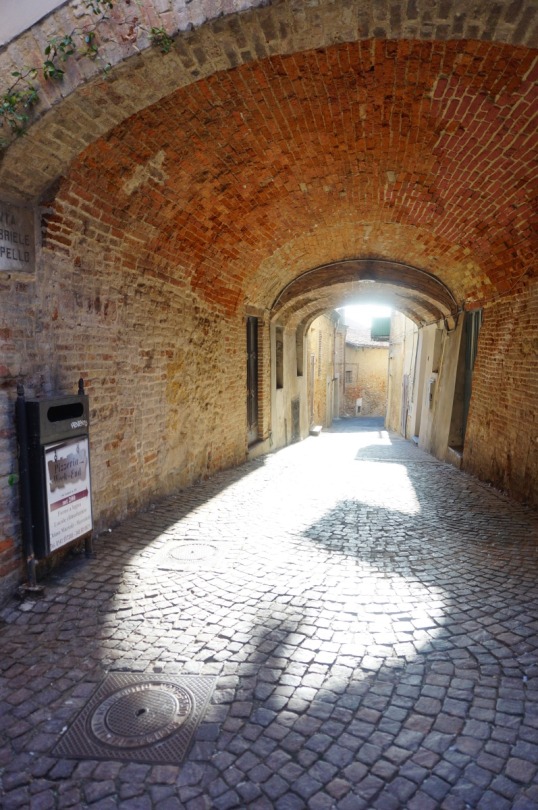
View On WordPress
0 notes
Text

Mario Buffa Moncalvo – Luigi Nono, San Vittore 1969, SMRP 9080, Ricordi, 1971
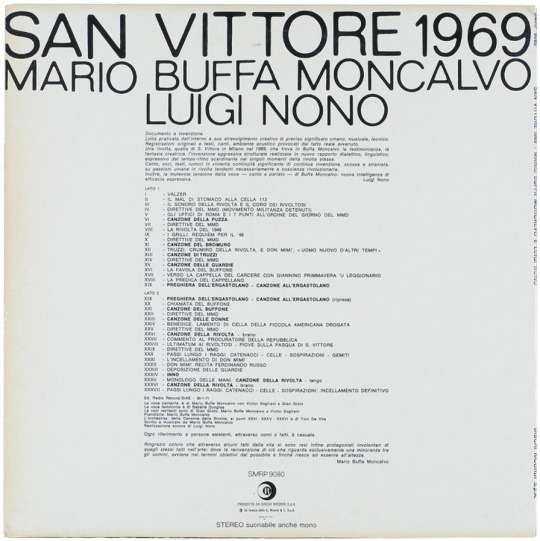




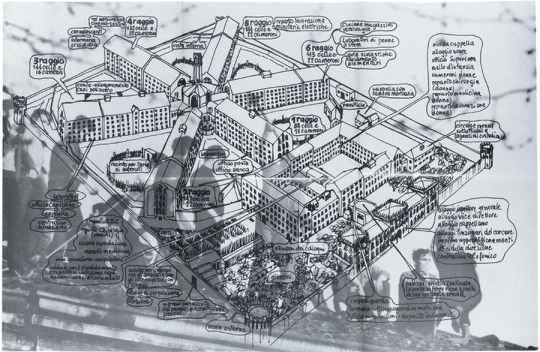
«Documento e invenzione.
Lotta pratica dall’interno e suo stravolgimento creativo di preciso significato umano, musicale, tecnico. Registrazioni originali e testi, canti, ambiente acustico provocati dal fatto reale avvenuto.
Una rivolta, quella di San Vittore in Milano nel 1969, che trova in Buffa Moncalvo la testimonianza, la fantasia creatrice, l’invenzione aggressiva strutturale realizzate in nuovo rapporto dialettico, linguistico, espressivo del tempo-ritmo scardinante nei singoli momenti della rivolta stessa.
Canto, voci, testi, rumori in violenta continuità significante di continua invenzione, scossa e straniata, su passioni umane in rivolta tendenti necessariamente a coscienza rivoluzionaria.
Inoltre, la mutevole tensione della voce – canto e parlato – di Buffa Moncalvo: nuova intelligenza di efficacia espressiva.»
– Luigi Nono
#graphic design#art#music#poetry#reading#music album#vinyl#cover#mario buffa moncalvo#luigi nono#canzoni della rivolta#ricordi#1960s#1970s
25 notes
·
View notes
Text
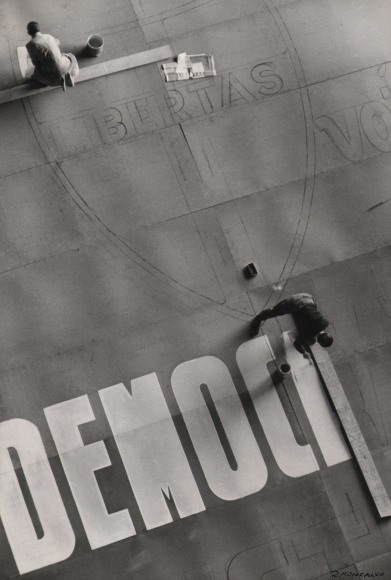
Riccardo Moncalvo, Campagna Elettorale, 1948
12 notes
·
View notes
Text
GABRY PONTE - Monferrato On Stage - Moncalvo(Asti), Italy | 28 Jun, 2024.
Find out more / Get your Tickets Now.
0 notes
Text

Riccardo Moncalvo, Cold Morning in the Suburbs, Torino, 1955
42 notes
·
View notes
Note
RED JEWS
Where Are They Now When We Need Them Most??
c. de franceschi, an italian historian from moncalvo (today gologorica in croatia), wrote in his letter (to) most esteemed doctor! (1852) that istrian slavs preserved an 'ancient tale' of a now-extinct race of giants that built the roman towns of istria, and whose bones may be found scattered across the peninsula (franceschi then goes to cite various examples of istrian peasants unearthing the bones of giants). he says the slavs refer to this race as sidovi—that is, židovi, 'jews'
#idk if the myth actually comes from the red jews legend#i kno the romanians know of them... which is close enough i suppose
5 notes
·
View notes
Text
Madrid Week 7: Viva Italia (not america..?)
Hola a todxs :). Niko back here again with week 7’s blog of my study abroad experience in Madrid! Like I mentioned in last week’s blog, this last weekend I traveled to Italy, and this past weekend I was in Sevilla, Spain. My trip to Italy was particularly transformative and jam packed with personal reflection. Read on for the reflection, stay for the photos (and Italian food p*rn). This blogpost probably took the longest for me to write, and was honestly pretty difficult for me to put in words. I hope I captured my thoughts well, and I always welcome feedback and discussion to any and all readers (at any point in time!).
Argentina (but aren’t we talking about Italy?)
As I’ve mentioned before, the summer after freshman year, I studied for 6 weeks in Buenos Aires, Argentina. One particular weekend, I took a trip to Iguazu Falls — the largest waterfall in the Americas by volume, and one of the 7 natural wonders of the world.

Long story short, I got onto a tour bus with a bunch of strangers from around the world, drove 15 hours across Argentina to get to the falls, randomly selected hostel room groups based on who was sitting nearby on the bus, and ended up in a group with 4 girls from Mexico, my travel buddy from the USA, and 1 girl from Italy.
We spent a wonderful weekend together seeing the waterfalls (barring a short-lived but intense spout of food poisoning after eating something funky at a Brazilian buffet), and formed the foundation of what could turn into lasting friendships. But, come Monday, we parted ways, not sure whether we would ever see each other again.
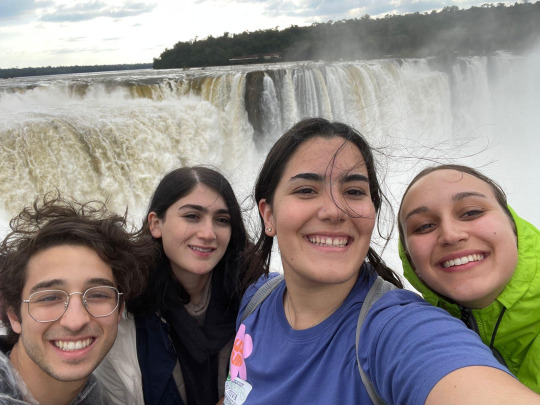

This trip was the first time I went into a travel situation without a true support system, and an important exercise in “trusting in the process” — and It helped me realize that I was capable of forming meaningful connections across language barriers, cultures, and in un-traditional social situations.
If it wasn’t obvious already, you might be able to see where this little backstory fits into my recent trip to Northern Italy. Before I departed for Spain in January, I sent a text to Gaia — the Italian friend I met in Iguazu — that I would be in Europe for the semester, and would love to see her at some point if the logistics work out.
Now we actually talk about Italy
Flash forward a few months, and well, the logistics worked out. Although our original plan was to go skiing in a small village in the Alps, we ended up being unable to due to weather issues. Instead, Gaia, her friend Camilla, and I took a tour of Northern Italy, visiting Turine, Asti, Moncalvo, and Milan.
In a way, this trip was an even bigger exercise in trust — although this time, it was my gut I was trusting, not the process. I hadn’t seen Gaia in nearly 2 years, and the only other time we had met lasted just 3 short days. I was about to spend another 3 days with her — but this time, nearly every waking moment would be spent together.
For some reason, the thoughts of “what if we didn’t get along?”, “what if it was awkward?”, “what if we got on each other’s nerves?” — normal things to think in this situation — never crossed my mind. I trusted my gut: that Gaia was someone that I got on with in the past, and I had a feeling that the people we grew into over the past two years would mesh just as well.
So, I didn’t worry. And I was right not to. After a short period of hesitancy, we clicked. We spent the weekend learning about each other — both from a personal and cultural point of view.
And by the end of this trip, I felt culturally enriched. There’s a level of cultural intimacy (is that a term? Well now it is, I just coined it) that can only be experienced by being someone who has lived and breathed that culture for their whole life — something that I feel like I’ve never had the pleasure of experiencing in my own heritage, first or second-hand.


A short aside on heritage in the USA
Ethnically, I am half Italian, half Greek. My great grandparents immigrated to the USA from the south of Italy through Ellis island, raising my grandmother, who gave birth to my mom. 4 generations later, I feel more comfortable calling myself Italian-American than Italian.
My mom’s side of the family was raised in northern New Jersey. I was raised Roman catholic, and I have 11 first cousins. Family gatherings are loud and boisterous, and people talk with their hands. My grandmother makes delicious Italian cookies called Pizzelles, and we call dish towels Mopinas (which isn’t even in the italian dictionary — it must have evolved on its own. Call it Englitalian [Italinglish? Coined.] ).

And that’s about all I’ve got to hold onto of Italian culture. Although I have more contact with Greece through the Orthodox Christian community and my direct-immigrant grandparents, I’ve never felt particularly connected to either culture. I don’t speak either language, and up until this past summer (when I visited Greece), I’d never been to either country.
People from the United States of America — especially, I think, those in the Northeast — place emphasis on their ethnic heritage that those from other countries around the world do not. Ask an American, and they’ll probably know where their blood comes from — if the records of their ancestor’s immigration do exist. Ask an Italian, or a Spaniard, and they probably will not. Odds are, in fact, that their blood will be just that: Italian, or Spanish.
The USA is a country built on immigrants, and it continues to be so to this day — and to me, it somehow feels wrong to not know anything about your cultural background.
This is a weirdly complex topic — one that I’ve thought about a lot —but bear with me here (and keep in mind, this is all from my personal point of view, and I welcome all new perspectives! Feel free to send me a message to discuss🙂). I think that, in the more liberal sphere of American adolescents, it’s almost “bad” to not know anything about your heritage — especially among white people, which is a label that I identify with. The USA has done a lot of messed up stuff in the world, and I think this is true to an extent that young Americans feel a desire to distance themselves from their nationality.
Instead, we grasp on to what we have that sets us apart from it — where our parents, grandparents, or great-grandparents come from. It gives us something to point to in conversations, something that lets us say “see, look, I’m not just a white-washed American, I’m cultured”, something to help us feel like we have more depth — especially in a country where everything feels like it comes from something else.
This is why I mentioned above that this is more common in the Northeast — although I can only truly speak on what I’ve experienced in Northern Virginia and in the University of Michigan. When I think of the term “melting pot”, I think of places like New York City. Southern states, and perhaps those in the West, have developed a culture that feels more unique, more distinctly American, and this is why (from my outside perspective) it seems like something more people feel proud of and claim as their own.
As I mentioned, this perspective comes from personal experience. And this is all something I’ve felt as a white American, at least 2 generations removed from my “mother countries”. After spending a weekend in Italy, I finally got a piece of that contact that I had always craved.
Italo-
Italian culture is just that — uniquely italian. Food, history, architecture, art — not only is it unique, but it is rich. From the first day that I spent with Gaia and Camilla, it was apparent that they felt a deep connection, pride, and understanding of their culture — and this is something that they graciously and enthusiastically shared with me.
I now have a greater — albeit limited — understanding of what it means to be Italian, in Italy. I learned about Italian espresso, when to have it (spoiler alert — any time of day is game), how to prepare it, and how it tastes. Some of my favorite moments of the trip were peacefully spent over the breakfast table in Gaia’s home, enjoying a light carb heavy breakfast and freshly brewed coffee.
We ate simple, delicious food at every restaurant we went to. The food was less extravagant than I expected it to be. Most of the meals were simple, with a focus on the ingredients and their preparation. Pastas, pizza, Milanese, Ragu, more pasta. Tiramisu, and gelato, too.
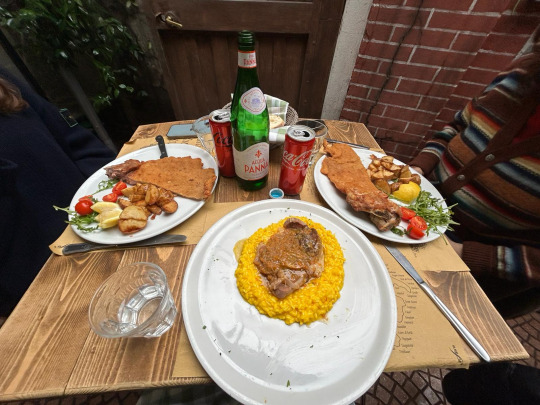


We had a night out — first to aperitivo, then to dinner, then to a bar that was built in an old desecrated church, then to a cheesy karaoke bar where the whole place was singing old Italian songs at the top of their lungs — with a group of 12 in Gaia’s hometown, which was made up of friends stemming from her high school days. The biggest difference between the Italian dinner party and an American one — we took our time. There was a feeling of ease at the table. Nothing was rushed. We enjoyed each dish, each glass of wine, and over everything, enjoyed each other’s company. The focus was on the people and the conversation, not on what was to be ordered and how fast it came out. I hope to bring this rhythm back to Ann Arbor with me (but that may be more difficult than I think. See footnote 1 below*).
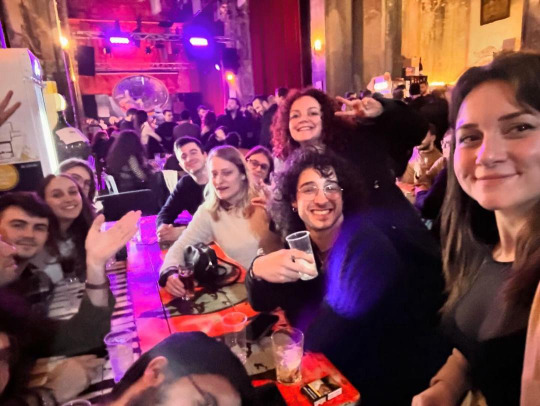
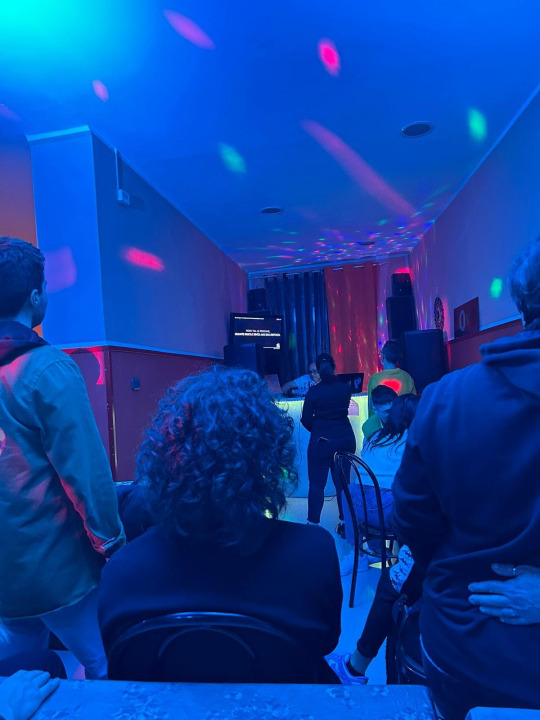
We explored multiple Italian cities, and walked a TON. I learned an interesting perspective of Milan (which was a beautiful city) from Camilla’s boyfriend — Milan is Italy to Europe, and Milan is Europe to Italy. (See footnote 2**). The architecture was beautiful, and after a rainstorm, Milan looked magical. The ground was sparkling, reflecting the dramatically lit buildings of the city center in the puddles that gathered on the ground. I saw the Italian countryside, picturesque rolling hills backdropped by an epic sunlit cumulo-nimbus cloud.
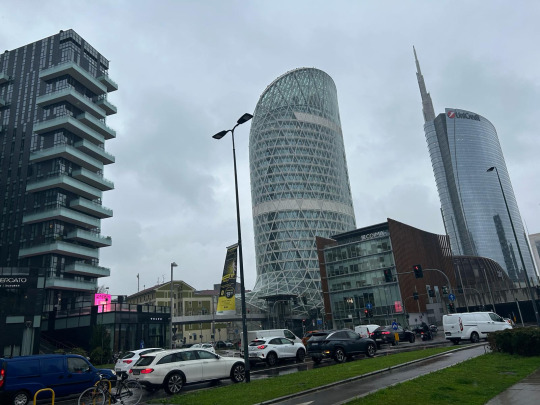
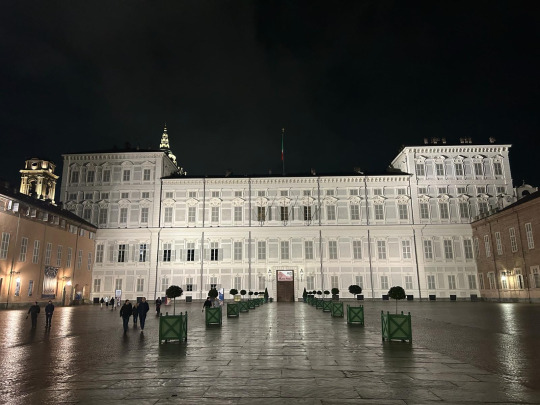
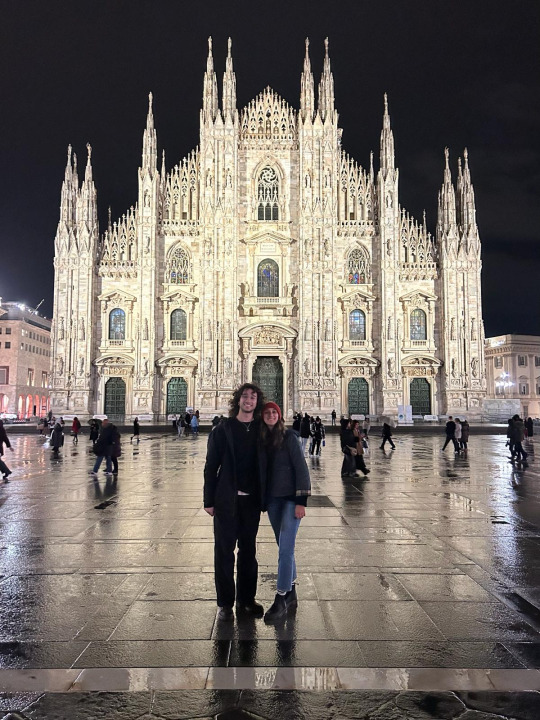

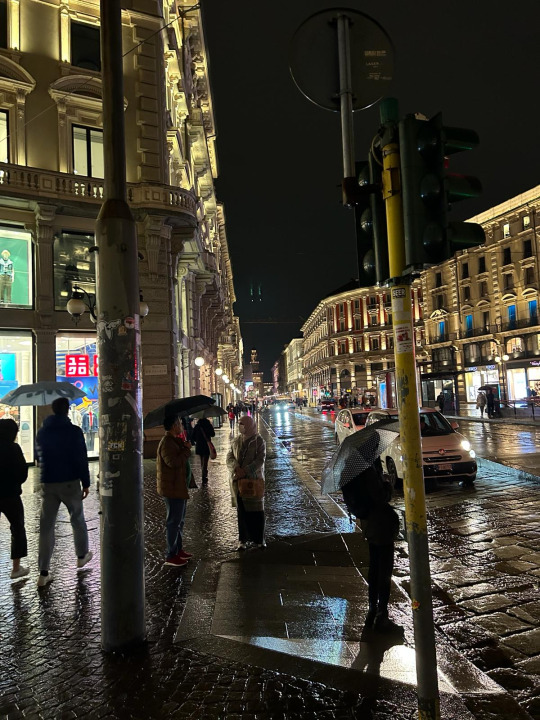
I even learned a base of the Italian language (I probably said “Come si dice” 100 times) that will serve me well if and when I want to learn it in the future — or if I ever get my Italian citizenship and decide to move there. Guess only time will tell.
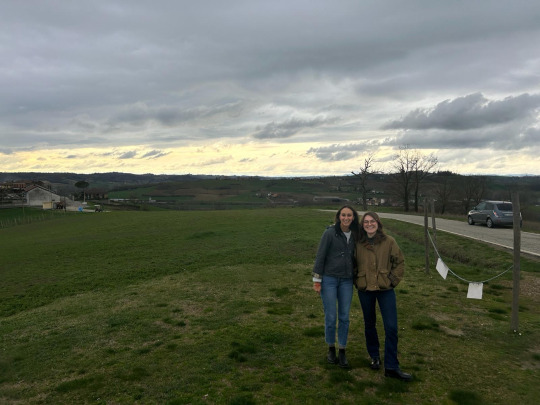
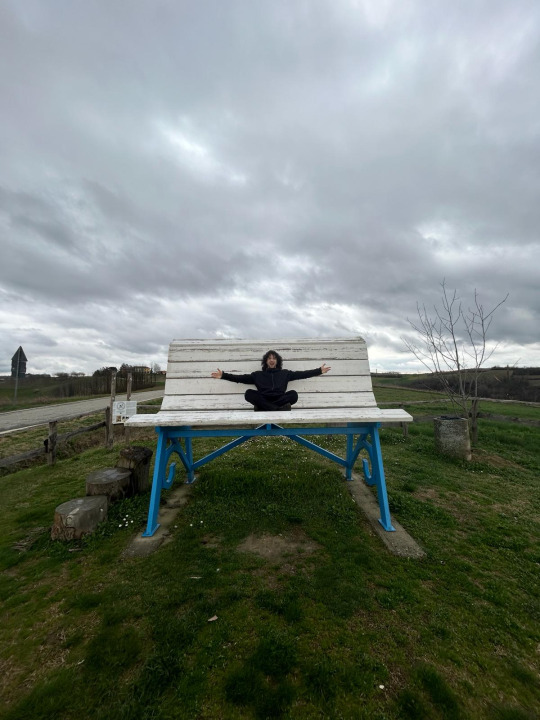
-americano
3 days is not a long period of time, but I can confidently say now that I understand a little better what it means to be Italian. I feel more connected to my cultural heritage — and in turn, I feel more connected than ever to my native culture in the USA.
It’s true that the USA has done a bunch of messed up stuff in the world. Imperialism, war crimes, political and economical extortion — the list goes on. But the longer I spend in Europe — the more I come into contact with different cultures, and understand foreign perspectives on the USA — the less these things feel like they’re inside a black box. Instead of avoiding these hard truths, I can face them head on — allowing me to acknowledge the bad and the good that comes with US culture.
A big critique I’ve heard abroad is that the United States has no culture of its own — but I don’t think that’s true. The USA is a place where global cultures collide, providing its citizens the opportunity to experience bits and pieces of the world and giving rise to unique elements born from this fusion.
Over the past 2 months, I’ve slowly shifted away from the feeling of shame that comes with being an American in Europe — and that’s thanks to a willingness to learn, adapt to, and accept cultures that I experience while I’m abroad (re: cultural humility, blogpost coming soon). Now, I’ll proudly say that I’m 50% Greek, 50% Italian, and 100% American. With my continuously evolving understanding of my individual parts (and all of the other cultures I come into contact with, especially Spain), I feel like I can better understand and contribute to that fusion, both in the melting pot of the United States, and as an international citizen in Europe — enriching the lives of myself and those I come into contact with.
Such is becoming “cultured” — a concept that has a bit of a pretentious connotation (IMO), but is worth striving for. I’ll be returning to Italy for spring break (Rome, Florence), so hopefully I’ll continue to develop this connection then. I also bookmarked in Google maps here all the places I visited in Italy this trip (and will do so in the next one) if you're considering taking a trip and want recommendations!
I planned on writing about Sevilla this week too, but I think this post has gone on long enough. I thoroughly enjoyed the different vibe it has from Spain, even through the rainy weather we experienced.
As always, check out the image descriptions for more details on each one. I hope everyone has a great rest of their week, and see you back here next soon!
Hasta luego,
Niko Economos
Aerospace Engineering
Universidad Carlos III de Madrid
Madrid, Spain
* In Italy, and the rest of Europe, servers get paid fair wages. In the USA, it’s not required, because it’s expected that servers will make up the difference in tips. I worked as a server for 2 summers, and made $3.50 an hour. The amount of money I made in a night was directly correlated to the number of tables I turned over. As a result, I did my best to get orders in fast, food out faster, and clear the table as quickly as I could so that I could make more money. Until this fact changes, I think it’s hard to have the same no-rush Italian experience over dinner unless you’re really conscious of it. Personally, if I’m not feeling pressure from a server to leave quickly, I’m likely feeling a sense of guilt for staying too long and reducing their nightly wage, no matter how well I tip. Maybe home cooked meals are the answer, which I’ll hopefully be well practiced with next semester :)
**To Europeans, they look at Milan and see what they think of Italy. The world capital of fashion, beautiful architecture, prosperous and well known city. Italians look at Milan and see what they think of as Europe —highly international, intercultural, and as a result more gentrified and expensive. I found this to be really interesting. Is there a US city that fits this bill?
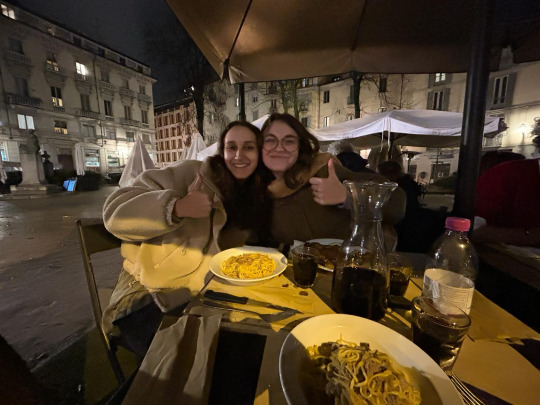
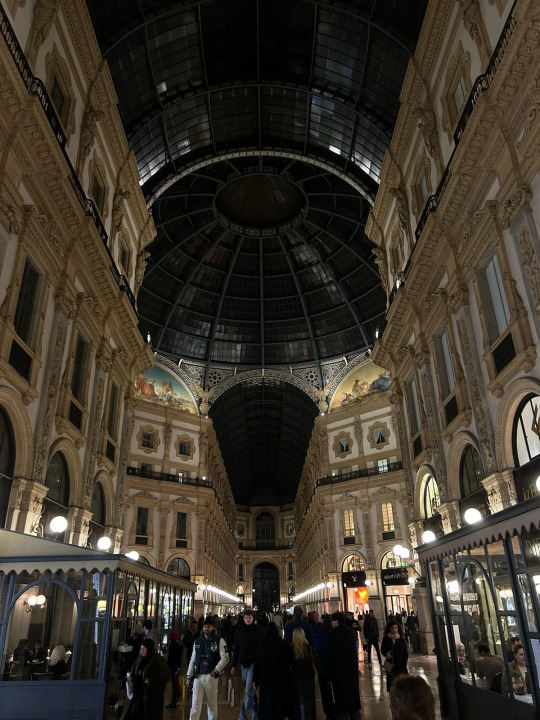
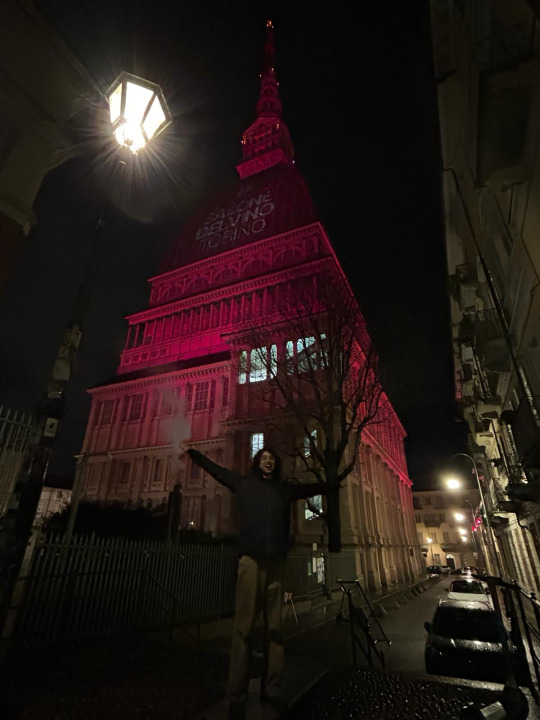
3 notes
·
View notes
Text
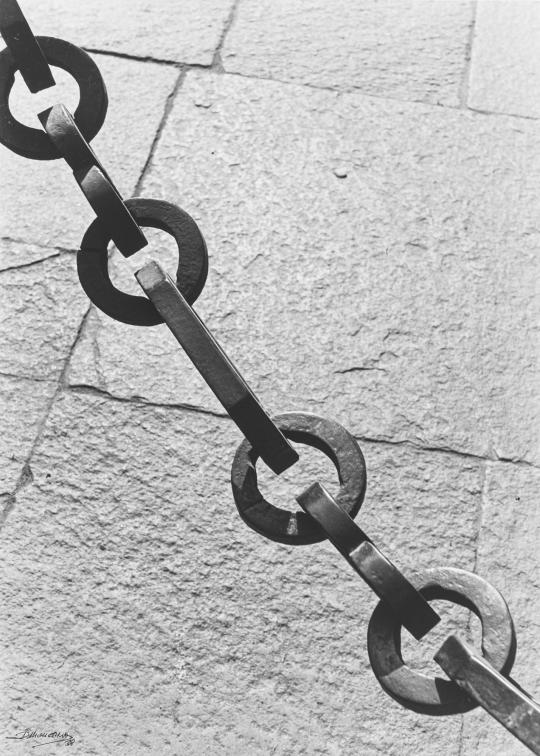
Riccardo Moncalvo (1915-2008) - Untitled (Chain), 1938
31 notes
·
View notes
Text

Moncalvo
December 2022
0 notes
